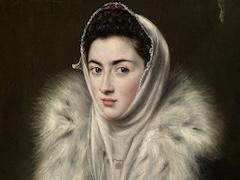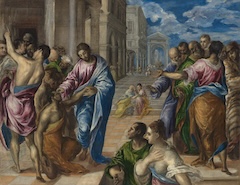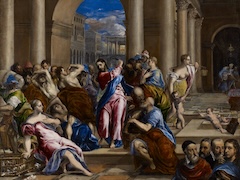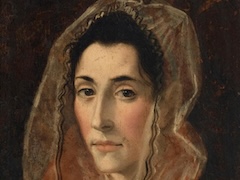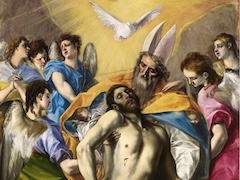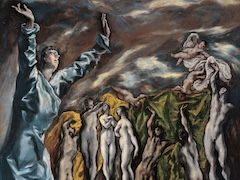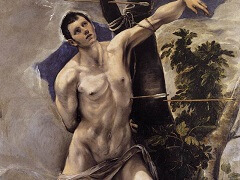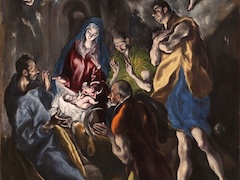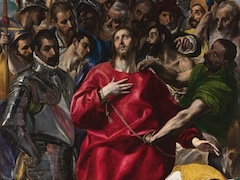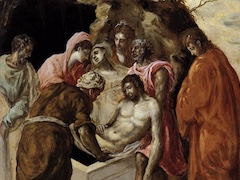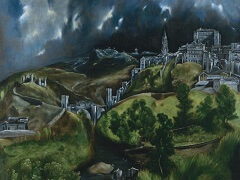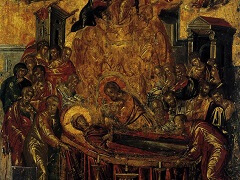The Burial of the Count of Orgaz, 1586 by El Greco
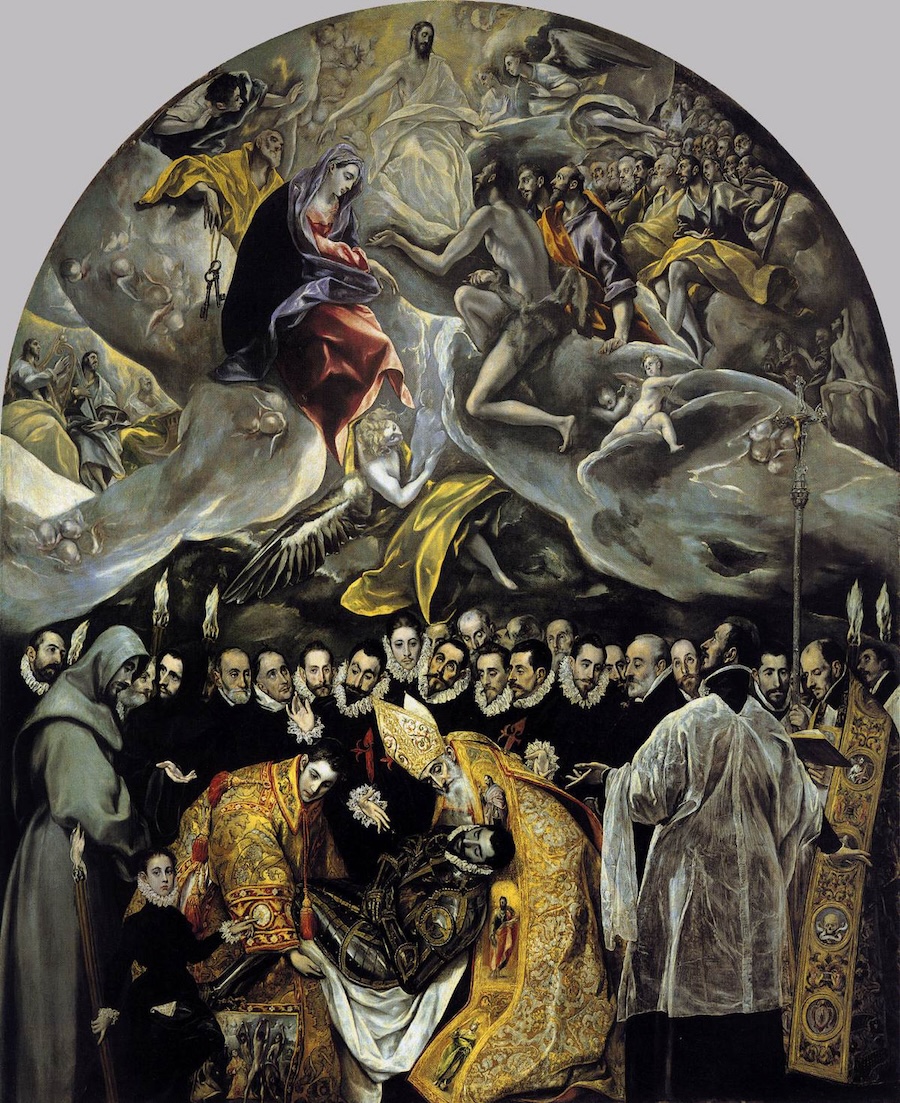
"My sublime work," El Greco himself called this painting, in a court proceeding. Yet humbly and obediently he had but painted here a story commissioned by the parish priest of Santo Tome.
A long inscription below the huge picture (and interrupting it there) tells us this story: Two-and-a-half centuries earlier, at the passing away of the pious Lord of Orgaz, Don Gonzales Ruiz, the dead knight was honored at this Church of Santo Tome, amidst assembled nobles and clerics, by the descent from open heaven of St. Stephen and St. Augustine, who themselves lifted the body and put it in its sepulcher.
The artist was asked to paint this miracle, and he painted it as he saw it: as the witnessing of a miracle. A little boy (Greco's son, perhaps) introduces himself and us to the event.
The faces are so silent, the hands so telling. Below, the rhythms are quiet, undulant; above, a swirling vortex. The nearness of so much happening. Everything here belongs to the psychological world of witnessing.
Is it the juxtaposition of two worlds that is painted here heaven and earth; pictorial richness and privation; warmth of tonality and coolness of color contrasts; solitary figures and consolidated forms? Is it conciliation or conflict? Silence. And is the radiant beauty, melancholy, and kindness of all these men's faces a deep memory of ancient Greece? Or is it Greco's rejection of all violence in life above all the violence of death, the execution and destruction of beautiful faces and beautiful bodies too often seen by him there, in Toledo, when victims of the Inquisition were executed ?

